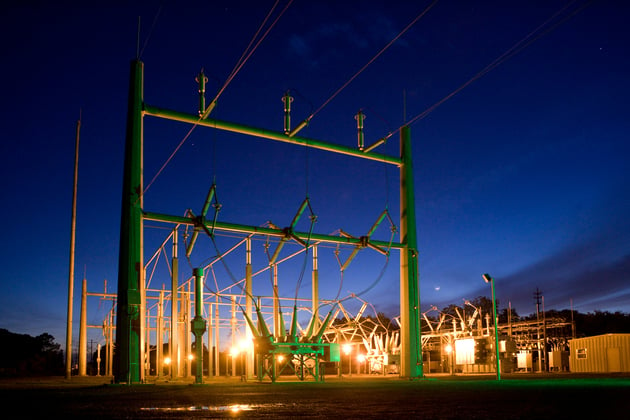The Value of Power: From Utility to Strategic Asset

As technology, manufacturing, and data infrastructure expand at a record pace, the ability to generate, store, or secure dependable energy has become a defining competitive edge.
Companies and investors alike are recognizing that control of power is control of productivity. In the modern economy, power is no longer just a utility — it’s an asset.
From Consumption to Capital
For much of the past century, energy was treated as a cost of doing business. Today, it is being capitalized.
Companies are building, buying, or partnering to secure generation capacity, not only to advance sustainability goals but to lock in price stability and ensure access in a tightening grid environment.
One megawatt (MW) of capacity can provide the annual electricity needs of about 400 to 900 U.S. homes, or, in many cases, support a high-density AI data hall or manufacturing line, depending on technology, capacity factor, and location (U.S. Energy Information Administration). In many U.S. markets, this level of capacity represents a meaningful economic value stream, often reaching several hundred thousand dollars per year, with values in the $250,000–$500,000 range possible in regions with elevated pricing or under specialized long‑term contracts.
Reliable access to power is now both an operational requirement and a strategic advantage, especially for energy‑intensive industries like advanced manufacturing and artificial intelligence. Ownership or long‑term procurement transforms power from a simple cost into a strategic hedge and a foundation for future growth.
Energy Pricing Meets Strategy
The economics of power have shifted from utility rates to investment calculus.
Industrial operators and data-heavy enterprises increasingly view energy the way investors view rent or credit: as a predictable driver of stability.
Long-term power purchase agreements (PPAs), on-site generation, and distributed energy systems may provide that stability, creating measurable balance-sheet value (Deloitte Power & Utilities Outlook 2025). The rise of corporate energy procurement has blurred the line between energy users and owners, and investors are responding in kind.
Recent transaction data shows that capital targeting power generation and storage reached multi-year highs in 2025, with North American power-sector deal volume tripling year-over-year as AI and industrial demand accelerated (ION Analytics, Oct 2025).
The Investment Response
Private equity, utilities, and institutional investors are converging around one idea: control of energy equals control of outcomes.
Recent acquisitions in solar, storage, and transmission illustrate how capital is flowing upstream into the energy supply chain. For instance, Altus Power’s $293 million acquisition of 220 MW of U.S. solar assets underscores the momentum behind distributed generation and energy ownership (Renewables Now, Feb 2023).
This trend marks a new asset class emerging within real estate and private markets: power-backed productivity, where asset value is reinforced by dependable and scalable energy access.
Reliability as Return
Energy reliability is increasingly treated as a financial metric. Every hour of downtime carries a measurable cost, whether reflected in lost production, data interruption, or supply-chain delays (NERC Long-Term Reliability Assessment, 2024). As a result, resilient power infrastructure directly supports return on continuity, the ability of a business to operate through volatility.
Companies are investing in microgrids, energy storage, and on-site renewables not only for sustainability but also as risk management tools, a trend highlighted across recent power and utilities outlook reports (Deloitte, 2025). The payoff is both operational and economic resilience.
CAI’s Perspective
At CAI Investments, we see energy as fundamental to asset performance.
As power continues to evolve from a utility to a strategic asset, we believe the next generation of industrial real estate will be defined not only by square footage but by megawatts and the value they represent.
Our focus on Manufacturing Essential Assets reflects this evolution. We invest in properties where power, production, and purpose align — strengthening the foundation of America’s industrial and energy future.
Discover how CAI identifies and develops properties that support U.S. manufacturing growth and energy resilience.
Sources & References
- U.S. Energy Information Administration (EIA), “Electricity Explained: Consumption and Capacity Factors,” 2024.
- U.S. Energy Information Administration (EIA), “Electric Power Monthly,” 2024.
- Deloitte, “2025 Power & Utilities Industry Outlook,” 2025.
- ION Analytics, “Dealspeak North America: Power-Sector M&A Update,” October 2025.
- Renewables Now, “Altus Power Acquires 220 MW of U.S. Solar Assets for USD 293m,” February 2023.
- North American Electric Reliability Corporation (NERC), “2024 Long-Term Reliability Assessment,” 2024.
About Author
CAI Investments
Subscribe to
our Newsletter
We are ready to help you until and unless you find the right ladder to success.

Comments